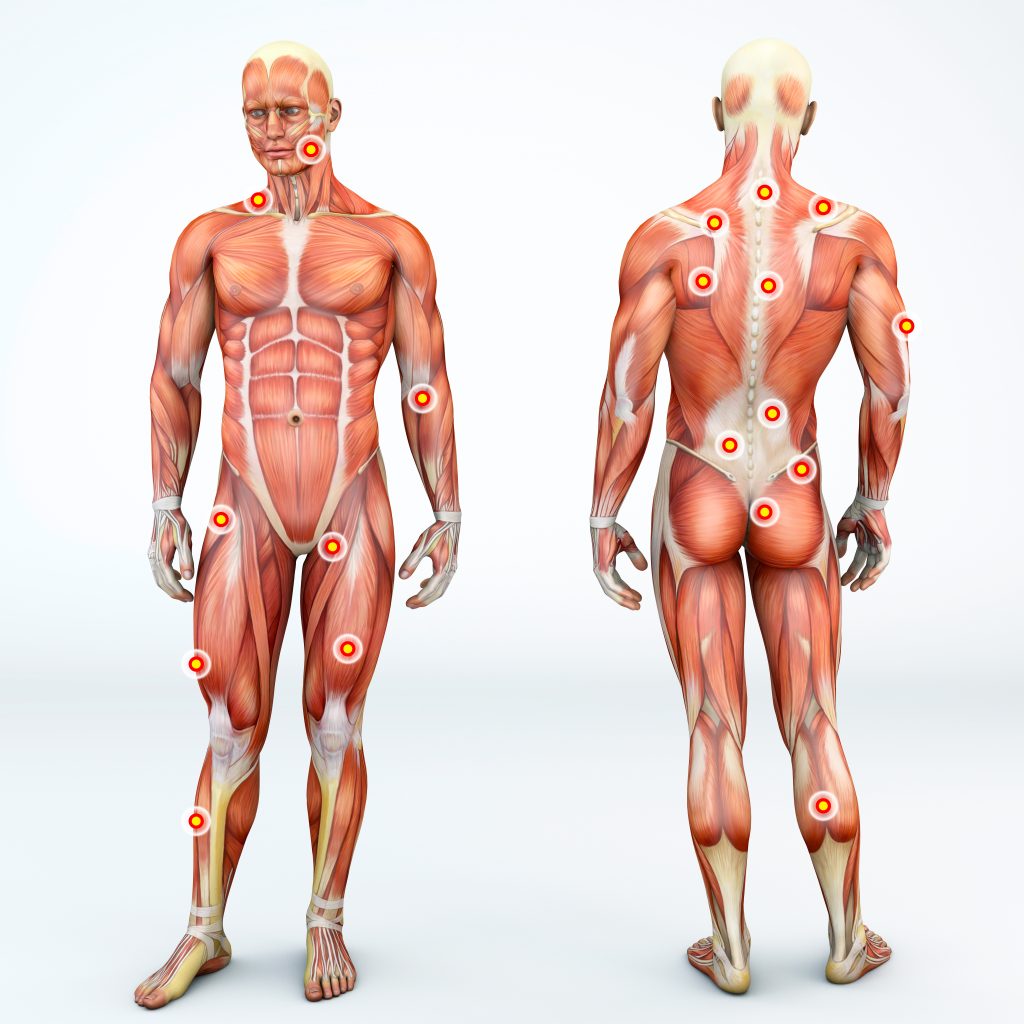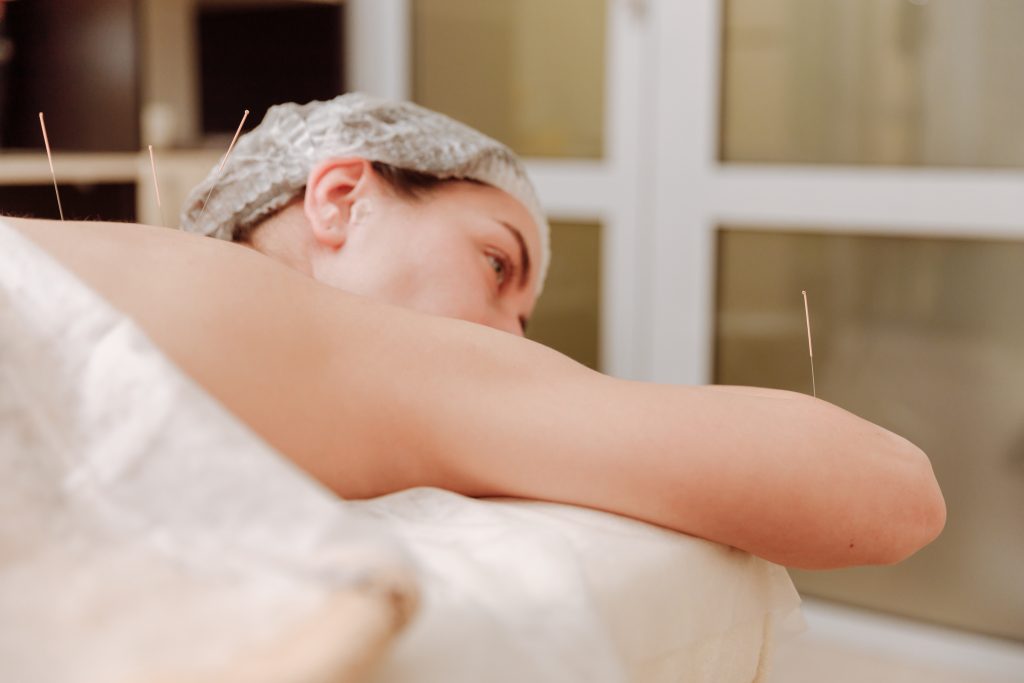Those who suffer from musculoskeletal pain may know what myofascial pain syndrome is. A dull, constant ache is characteristic of myofascial pain syndrome. It does not go away even with relief from pressure. It also makes it difficult to concentrate on chores or get a good night’s rest.
Learn about the main causes of myofascial pain syndrome, how it’s treated, and how to prevent it.
What Is Myofascial Pain Syndrome (MPS)?
Muscle and fascia are the sources of discomfort in people with MPS. Most people usually have pain localized to a small area or referred to as pain with different patterns. It can affect one muscle or a group of muscles.
MPS comes in two types: acute and chronic. In most cases, acute MPS improves or responds well to conservative treatment. The prognosis is typically poorer for those with chronic MPS. The symptoms can linger for six months or more.
What Triggers Myofascial Pain Syndrome?
Myofascial pain syndrome isn’t completely understood, but several factors include:
- Tearing of muscle tissue
- Excessive force applied to a muscle, muscle group, ligament, or tendon
- Muscle fiber damage
- Repetitive motions
- Lack of activity
- Stress and anxiety
What Signs And Symptoms Characterize Myofascial Pain Syndrome?
These are the most common signs of myofascial pain syndrome:
- Localized muscular soreness
- Painful areas known as “trigger points.”
- Pain that doesn’t go away or gets worse
- Having trouble sleeping because of pain
These symptoms may be rare, although they could include:
- Headaches
- Not getting enough rest
- Stress, anxiety and depression
- Fatigue
What Are Myofascial Trigger Points?
A trigger point is a spot in muscle tissue that hurts when you press on it, leading to pain and stiffness. These are hyper-irritable spots inside taut bands of muscle.
Types Of Trigger Points
- An active trigger point is usually in a muscle. Pressing on it causes pain in the area or the muscle itself.
- Latent trigger points are those that are potentially active but are currently inactive. Compression is the sole known trigger for pain or discomfort in this area.
- The secondary trigger point lies in a different muscle than the primary trigger point. It is possible to irritate this area simultaneously with the active trigger point.
- Satellite trigger points don’t work in the same area as another trigger point.
Where Are Trigger Points Most Common?
Any muscle in the body can get myofascial pain and trigger points. But the muscles in the upper back, shoulder, and neck are the ones that get hurt the most. Among these muscles are:

- Sternocleidomastoid. This massive muscle flexes your neck and aids in rotating your head to the other side. On both sides, it extends from the base of the skull behind the ears to the collarbones and the breastbone.
- Trapezius. This triangular-shaped back muscle is large and flat. It rotates the head and neck, shrugs and stabilizes the shoulders, and twists the arms. This muscle covers an area from the back of the skull to the center of the spine.
- Levator scapulae. These two strap-like muscles aid in shrugging your shoulders upward and rotating your shoulder blades. They range from the top of your shoulder blade to the first four cervical vertebrae.
- Infraspinatus. This triangle muscle attaches to the back of your shoulder blades. It aids with shoulder rotation and stability.
- The teres minor is one of the four muscles that make up the rotator cuff.
- Rhomboids. When contracted, this set of upper back muscles brings the shoulder blades together. It anchors the upper limbs to the shoulder. The muscles are perpendicular to the spine. It begins at the base of the skull and ends at the rear of the shoulder blades.
How Do You Diagnose Myofascial Pain Syndrome?
It’s too common to misdiagnose or ignore myofascial pain syndrome. Imaging or lab tests can’t diagnose myofascial pain syndrome. Instead, a thorough exam that may include:
- Physical exam where a doctor feels tight muscle bands to see if they’re causing pain.
- A visual inspection for signs of postural irregularities
- Your doctor may inquire as to whether you have recently had an injury. Or whether you engage in any activities that cause repetitive stress.
- Your doctor will also want to know how long you’ve been experiencing the pain. What makes it better or worse, and if you have any other symptoms.
What Is The Best Treatment For Myofascial Pain Syndrome?
The primary objectives of treating MPS are pain reduction and addressing underlying causes. There is no clear evidence that one therapy is better than another. Still, exercise regards as an essential part of any treatment plan. Talk to your doctor about your treatment options and how you want to receive treatment.

Medications
Myofascial pain syndrome treatments include:
- Pain relievers. Painkillers like ibuprofen (Advil, Motrin IB, and others) or naproxen sodium (Aleve) sometimes work for some people. You could also get stronger painkillers from your doctor. Several of them come in the form of patches that you may apply directly to your skin.
- Antidepressants. The pain-relieving effects of antidepressants come in several forms. Amitriptyline alleviates pain and promotes restful sleep.
- Sedatives. Clonazepam (Klonopin) helps treat the stress and insomnia that often accompany myofascial pain syndrome. Be cautious with its use because it has the potential to become habit-forming and drowsy.

Physical Therapy
Your physical therapist can use your symptoms to develop a treatment plan to help alleviate your discomfort.
Cooling Spray
The first step is stretching the muscle and spraying it with cooling spray along the path from the trigger point to the sore spot. This method is called the “stretch and spray.” It’s possible to do this multiple times.
Stretching
A physical therapist might have you do some light stretching to help loosen up the sore muscle. They may use a topical anesthetic spray on your skin. It can help alleviate any discomfort caused by trigger point pain during stretching.
Heat Therapy
The use of heat, such as via a hot pack or an electronic heating pad, can alleviate muscle tension and pain. When using heat therapy, keep sessions to no more than 20 minutes. Always employ a barrier to prevent skin damage.
Ultrasound Therapy
This therapy uses sound waves to improve blood circulation and warmth. It may relieve myofascial pain syndrome symptoms. It’s important to apply ultrasound gel before using the ultrasound equipment.
Electrical Stimulation
This procedure includes transferring low-voltage electrical signals from a tiny device to the sore location via pads adhered to the skin.
Massage
Your physical therapist may recommend massaging the sore muscle to ease discomfort. Strokes may be slow and deliberate or apply concentrated pressure to trigger points.
This procedure may also include the following:
- Passive rhythmic massage
- Active rhythmic massage
- Myofascial trigger point pressure release. This method treats trigger points with light, direct pressure, and long stretching strokes. You’re making progress if you can move more freely and perform daily tasks with less pain.
Posture Training
Improving your posture can help ease your myofascial pain, especially in your neck. Avoiding overuse of your trigger point can is possible by doing exercises to strengthen the muscles around it.
Kinesio Taping
Kinesio taping may relieve MPS pain and increase mobility. It helps reduce discomfort and builds upper trapezius muscle strength.
Dry Needling
Dry needling involves inserting very fine needles into the area of discomfort. It helps relax the muscle, boost circulation, and alleviate pain. Sometimes, a doctor can place a needle multiple times into a trigger point to relieve tightness and soreness.
Red Light Therapy
Also called low-level light therapy, your therapist puts near-infrared light on a person’s trigger points.

Alternative Therapy
Acupuncture
Acupuncture needles are long, single-use, tiny filament needles placed into the trigger point. It relieves pain and restores muscle function by breaking up the tight ball of muscle and fascia fibers.
Trigger Point Injections
The doctor punctures the skin with a thin needle and injects a local anesthetic into the trigger site. The treatment aims to relax the trigger point so that the affected individual may resume regular physical activity. You only need a few minutes for this quick outpatient procedure.

Self-Care Tips
Exercise
Doing gentle exercises that stretch and strengthen your neck and upper back muscles can help loosen up tight muscles. It also helps improve your posture and reduce myofascial pain. Also recommended are aerobic activities like biking, swimming, and walking.
Relaxation Techniques
Relax your muscles and calm your mind with deep breathing exercises and meditation.
DIY Massage
Self-trigger point massage is a quick and easy way to alleviate discomfort. When lying on your back, place a foam roller or tennis ball beneath your neck and upper back and roll out any knots you find.
What Happens If Myofascial Pain Syndrome Is Left Untreated?
It could worsen if you have myofascial pain and don’t get it checked out. Straining or stretching the injured muscle or trigger point may make it worse. Myofascial pain syndrome, if left untreated, causes the affected muscle to become less flexible. This, in turn, can lead to the emergence of a muscular imbalance.
A Note From Gulf Physio
We hope you’ve enjoyed learning about the subject matter above. This blog post is not a substitute for medical advice. The author cannot guarantee the accuracy of the information presented. If you have any questions or concerns, please consult a healthcare professional. All decisions and actions you make are your own. No one involved in making this resource is liable for its use.



